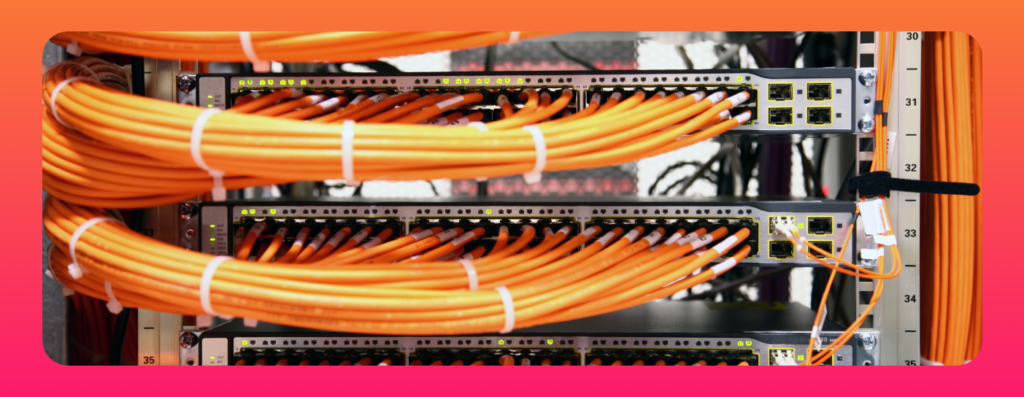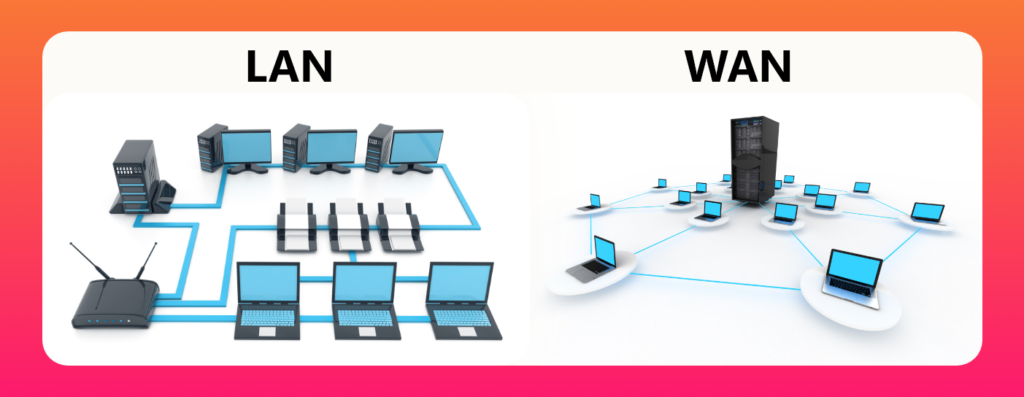An Ultimate Guide To Wide Area Network (WAN)

WAN stands for Wide Area Network (WAN) that is used by companies that operate across multiple sites. WAN is something different from LAN and allows users to exchange or share data between two different sites.
Generally, these sites are connected through leased lines to provide a secure and reliable network. WANs facilitate communication and sharing of information between devices. However, in some recent years we have seen a rise in software defined WAN (SD-WAN) that make it easy to set up and administer WAN.
Typically WANs are used by international businesses but they can also be used for everyday works. The Internet is considered to be the largest WAN in the world. Here in this article we are providing all the information you need to know about WAN.
What Is A Wide Area Network?

A wide area network (WAN) is a large network that is not tied to only one location. We can also say that it is a computer network that connects other small networks. By definition, a wide area network is a type of telecommunications network which connects devices present at multiple locations and all across the world. According to studies WAns are the expansive and largest computer networks to date. Since these networks are not associated with one location, they allow localised networks to communicate with each other across great distances.
These networks are established by network providers who lease their networks to different organisations who want to use it. These customers can use it for different purposes such as to communicate with other users and relay or store data without any restriction to the distance as long as they have access to WAN. You can generate access through different links such as wireless networks, virtual private networks (VPN) or cellular networks.
International organisations can complete their daily tasks without any delay. Employees can use business WAN from anywhere to communicate with other team members, share data or simply stay connected with the main resource center. There are many certified professionals in the UK that help organizations to maintain their critical IT infrastructure and internal wide area network.
Why WAN Is Essential?
Now most businesses are turning towards cloud based applications. Being in the cloud, you can also control a software defined network from a central point. It gives the network administration of your business an overview of what is going on throughout the network.
It helps them to fix any problem in a timely manner without going to the remote site, saving the cost of running a WAN. Moreover, it also allows you to add extra networking features easily with the help of app store models to add functionality. With WAN the employees working at home and in small businesses can also be linked securely without using low-cost public internet connections.
What Is The Purpose Of WAN Connection?

If we consider the organisations working without a WAN connection, we can see that these organisations would be isolated or restricted to specific geographic locations. Although LAN allows the businesses to work within their buildings, the outside growth to other countries or cities would not be possible. It is because the associated infrastructure will be very costly for the organizations.
As with time the technologies are changing and organizations are growing internationally, WANs allow them to communicate with other branches, share data and stay connected. When the employees are in another city or country for work, they can communicate with their team members through WAN and also get access to the data they need. Furthermore, WAN helps companies to share information with their customers, partners, clients, or B2B customers.
In addition, WAN also provides some important services to the public. For example, university students could rely on WAN to get access to library databases. People also depend on WAN every day such as to communicate, shop, and more.
Advantages Of WAN For Your Business
When your company switches to SD-WAN solutions it means that your IT managers have more control over your network functions. It also makes troubleshooting easier which ultimately makes it possible to resolve issues without sending people out to a site or waiting for long times to get support from a service provider.
In the past when WAN was a relatively new service it was complex and required specific hardware including switches, routers and gateways and thus needed expert input from a service provider or any hardware company to troubleshoot or fix the problems. SD-WAN systems offer a user friendly and easy way of handling network functions and help your company to give your in house IT teams control over your network.
We hope that now you can easily understand what a software-defined WAN can do for your business. You see that it helps in improving the security and agility of your network connection. When SD-WAN is operated over leased lines its advantages are amplified and you can also get the benefits of a high bandwidth, symmetric and uncontended connectivity solution.
In the past there were only a few businesses that could afford sophisticated networking technology but now SD WAN enables SMBs to compete with their competitors. Small and medium businesses also have multiple locations all across the country so they also face the network challenges that are similar to larger organizations. They can also use software defined WAN to overcome these challenges and increase productivity of their business.
What Is The Difference Between WAN And LAN?

To get more understanding it is essential to have an idea of WAN Vs LAN. The basic difference between WAN and LAN is due to the geography. Where LAN is the local area network and covers one building or site while WAN is wide area network which connects multiple sites over a wide area. LAN is tied to a single location whereas WAN is free of geographical restrictions. Following are some key differences between these two technologies:
- LAN is a computer network which covers only a small area such as a school, office or a building while WAN covers a broad area.
- The data transfer rate of WAN is lower than the data transfer rate of LAN.
- The ownership of LAN is private whereas the ownership of WAN can be private or public.
- The maintenance and design of WAN is difficult while that of LAN is easy.
- There is no need to set up extra devices in the LAN network that is why it is not much expensive. On the other hand in WAN we have to connect remote areas. It can cost a little higher.
- The speed of WAN is slower than the speed of LAN.
- The propagation of delay time is longer in WAN as compared to LAN.
- WAN offers less fault tolerance while LAN offers more fault tolerance.
We hope that the above points can help you in understanding WAN Vs LAN and you can make a better decision to choose the best for your business.
Do You Need A Leased Line Connection For Your WAN Connection?
In the past WANs were used to connect some main sites with smaller offices and business broadband was considered suitable for WAN connection. But with the decreasing cost of leased line and the considerable benefits of leased line connection most businesses use this connectivity solution to connect WAN. Due to a fall in cost even small businesses start using leased line connections.
In many cases these leased lines are used to connect different sites in “hub and spoke” configuration where lines from the main data centre, either provided by service provider or in house are used to connect or serve the other sites.
When you have a leased line connection, it means you will have a secure, reliable and a private connection. It allows you to share or transfer data safely between different locations. When you are connected through an internet service provider it ensures that if one of your offices has some failure, others can continue connecting with each other.
Wrapping Up
So, what can a software-defined WAN do for your business? We’ve already seen that SD WAN solutions offer improved agility and better security. When operated over leased lines, these benefits are amplified plus you have the advantages that come from having a high-bandwidth, fully synchronous, uncontended connection.
This can assist SMBs in competing with their larger competitors who, in the past, would have been the only businesses able to afford more sophisticated networking technology. Even SMBs operate across multiple locations, so the network challenges they face are really no different to those of larger enterprises.



